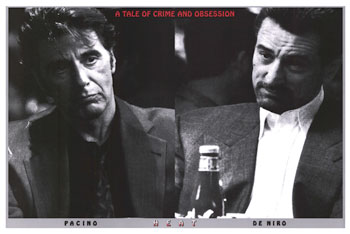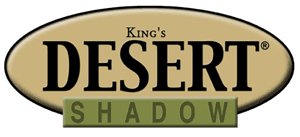|
LRI Long Range Shooting Course:
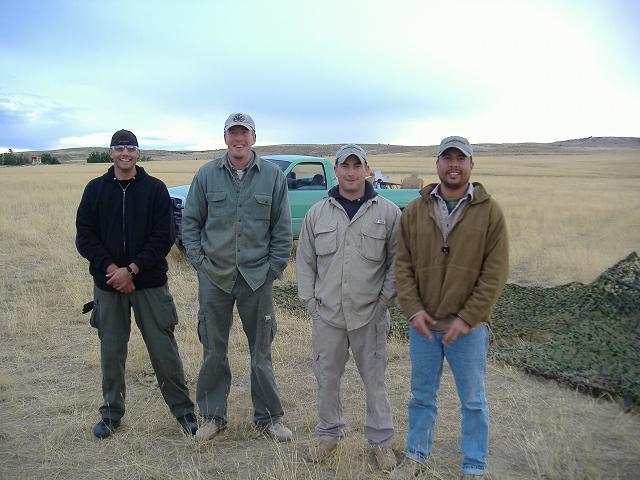
500 Miles to nowhere. I left
Ogre Ranch after 9AM... a late start... Friends and Family delayed,
but quite honestly I was reluctant to leave my boys. I wanted to
bring them with me.
The drive was long but not
bad at all... crossing the 500 miles I went through some of the most
gorgeous country I've ever seen. Oceans of grassland, dotted with
Pronghorn. So many antelope that I couldn't believe it. There was a
Speed Goat everywhere I looked. Most of the trip I'd see them
individually, but as I moved further north east, I began seeing them
in larger groups. Even a good sized group that could have numbered
about a hundred. I've not seen that many in one group in almost
fifteen years.
LRI is located near Lance
Creek Wyoming. Now, you guys know I bust on Vernal, Utah for being a
small town. Vernal is cosmopolitan compared to Lance Creek. I'll try
to remember that next time I complain about the lack of good
eateries in Vernal. In about a week once this is through.
LRI HQ is a simple steel
building that was built in a week. Hastily done, but accommodating.
Plenty of room for everyone, plenty of space. The bathroom has a
door, there is a shower, urinal, toilet, sink, and there is a Washer
and Drier. Everything one needs. Military bunks that could have been
taken straight from Ft. Benning's Harmony Church, where I did my
Boot Camp way back when. Brought back nightmares of Drill Sergeants
in Campaign Hats. Luckily those nightmares did not materialize as
Shep and his crew of Instructors are casual and laid back.
September gave us a cold snap so this first night, it was cold. As
it would be every night of the course. All of us gathered the night
before class started so we could start first thing Monday morning.
We bullshitted that night, and we could see our breath while
speaking. The space heaters can not keep up. This is why LRI has no
scheduled winter courses. While it was chilly, it wasn't too cold.
We were told to bring layering clothes for cold weather so no one
was uncomfortable. If you got too cold, Shep's dog, Ruben, could
come over and give you a friendly hump to warm you up.
After driving all day,
everyone was just happy to be able to walk around and bullshit. Most
guys at there are former military, so everyone had stories to tell.
Looks like a good group so we'll have a good class once in starts
first thing in the morning.
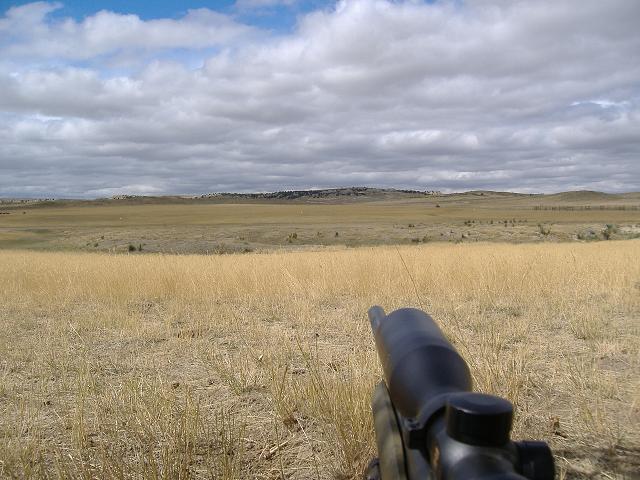
Day One:
We woke up and had chow at
7:30. A great breakfast. We had some class time on the fundamentals
and got damn near overwhelmed with information and mathematical
formula. Because our class was small, we got through the bookwork
quickly. Theory is just that until you put it into practice. Since
the weather was on our side here, we decided it was time to head out
to the range.
We went to the 100 yard
range for zeroing. We worked some drills that I wont get into
because they are LRI intellectual property. One fun training drill
that I will talk about is the Colored Dot game. There are 4 colors,
and rows of four in different patterns, and this was on four
different target boards. You get your name called, you get a color
called, and you shoot that colored dot on that row, on each target
board as quickly as you can. It was a lot of fun and a good
challenge.
We had a lot of discussion
regarding the critical importance of tracking your cold bore shots.
Lots of misinformation out there floating around the Gun Shop
Commando Circuit about what a Cold Bore Shot is. What I didn't know
was just how far off those CBS's can be... and the importance of
tracking them. Reason being, so when you make a CBS, you know where
it is going to hit. This is why you have to be consistent with your
cleaning routine, because it has an effect on your CBS. Drastic
effects. These effects were different for each rifle at the course.
I never really thought about the CBS like this before. Another
reason to keep a Data Book for each of your rifles.
Day Two:
The food here is
fantastic... Chow time isn't your normally chow hall mess. Larry is
a Master Chef... a Grilling Ninja. You will not be disappointed when
you drag yourself back in from the range and smell the food he's
been cooking up. Hot coffee and water for Tea or Hot Chocolate was
always ready and waiting.
Our days start out at the
100 yard range where we work the FBI Drill and track our CBS. Once
that was done we move out to the long range course. We checked our
zero at 200 yards and found where we were hitting at distance. This
day was about finding our Scope Dope from 200 yards out to 600 yards
and hitting at those ranges became clockwork. We discussed Max Point
Blank, Wind Drift, and we worked drills between 4, 5, and 600 yards.
We also worked on Sniper Spotter Teamwork.
Day Three:
I'm eating so much good
food, I feel sick. My bad knee is kicking my ass. I came to the
course with a torn meniscus and ACL tendon, so moving is done with
gritted teeth and Tylenol. The LRI Staff were accomodating and while
I moved slower, they made sure I didn't miss anything without
holding up the rest of the class. If you have some sort of health or
mobility issue, LRI can still work with you so you come away knowing
how to get the most from your rifle. In spite of my pain, I'm
enjoying everything. CBS, FBI Drill, and we worked from 700 to 1000
yards. Once we found our scope dope for each range... yes, at this
point we were already hitting at a Grand. Brilliant! Shooting at a
grand, I got scope bit hard enough to cause bleeding. Jason, one of
LRI's former Marine Snipers, asked me if I needed a bandaide. Fuck
a bandaide, I said, as I jacked another round in the chamber and
hit the 1000 yard plate. This just taught me a lesson to be mindful
of crawling up the stock.
Now that we can shoot, we
have to push it further. To start out on the next phase, first we
had to learn how to draw a Range Card. This is basically a map of
your field of fire. On this you jot down your ranges to anything out
there... target reference points, any identifiable features... known
ranges. Also include your scope-dope for those TRP's. Makes things
easier. I'll leave the details of drawing a good range card to the
Masters at LRI. There is a lot more to it, and there are different
kinds of range cards you can draw. While this is a standard practice
for military operations, it has applications outside of the
military. If you are a hunter, you can draw up range cards of your
fields of fire from your favorite tree stand or hunting blind. If
you are a police sniper, take the time to draw range cards from
likely positions from landmarks such as roof tops or towers...
having that information at your fingertips could come in very handy
in the future.
While we were doing drawing
our range cards, the LRI instructors removed the field markers on
the rifle range, and scattered the targets around... they were no
longer at known distances. 10 steel plates, numbered, and we had to
estimate the ranges and jot down our estimated scope-dope for each.
Then we did an evil little drill where we have to shoot each plate
based on our estimates. Marine Snipers do this all the time... this
is their bread and butter as Marty, one of the instructors,
explained. The way you do this is with your mil dot reticle in your
scope, working a math formula, and there you go. My problem is that
I didn't have a Mil Dot reticle. I had the Rapid Reticle from PFI.
There is a way to mil out ranges with the PFI scope but we didn't
cover this. This was the first time that my brilliant PFI RR800-1
scope became a handicap. You have to shoot a score of 80. I lead the
class with an 84 on the first drill.
Day Four:
I was hoping someone would
give me a Negligent Discharge and accidentally shoot me in my knee.
It kept me up all night... again... We had an MRE for lunch the day
before, which means I couldn't take my normal morning
constitutional. Evidently I wasn't the only one. Farting was
abundant. Thank goodness the wind had picked up to clear the air.
We of course did the CBS
tracking with the FBI drill, worked some more unknown distance
drills, and then we went out hunting.

I'll just give you the
highlight reel now...
The Vehicle Assault Course.
The LRI Assault Jeep is a monster. Huge tires, big cage for stand up
shooting while on the move... which is perfectly legal at LRI. Not
in Utah. Damn it. For this course I used my SIG 556. I rocked the
course, not just hitting each target, but double or triple tapping
each one just because I was having too much fun.
Town Raiding. Six of us
jumped into the LRI Assault Jeep and we went raiding prairie dog
towns. Jason spotted a coyote and called out for me to shoot it. My
rifle wasn't at a friendly angle and thanks to the roll bars in the
Jeep, I couldn't move my gun into a better position fast enough, so
Jason shot it. I didn't mind at all. It was a good shot and the
coyote didn't even twitch. Matt and Shep then had to step coyote
excrement as Jason posed for a photo, holding up the dead coyote.
Shep clipped the ears for the bounty which is 25 bucks.

On an interesting note,
calling in coyotes with commercial made calls didn't work here, but
pounding around in the Assault Jeep, blasting Hard Rock, scaring
wildlife in six counties evidently does. On the other hand, using
these calls, Mule Deer respond with gusto. We tried to hunt
coyotes... and I used a small arsenal of my best calls. Didn't call
one bloody coyote in with them... but two doe Mulies came in at a
dead run. Frantic, they were. They got within 20 yards of me,
standing up in the open, and they just looked at me with their ears
up... it was like they were saying What!? What is it?! They
snooped around, walked past Matt and then wandered away. I've never
seen that before.
Another thing I never saw
before was a hawk who swooped in for a strike on a prairie dog that
I was about to pull the trigger on. He swooped in and perched right
there stretching his talons... magnificent bird.
Lefty-Twofer. Jason had a
brutal shot which nailed a P-dog sitting in a perfect side on shot
position. His bullet clipped the dog in the back of the neck and
severed the spine letting the head fall forward unattached. Because
I spent a lot of time rolling in Jason' Chevy in the Shotgun
position I had to shoot left handed. This proved to be a
challenge, but no handicap. I made some fantastic shots. The best
one was two head shots with one bullet, left handed. These little
P-Dogs would be instantly turned inside out in a very violent,
graphic manner. It was a horror show.
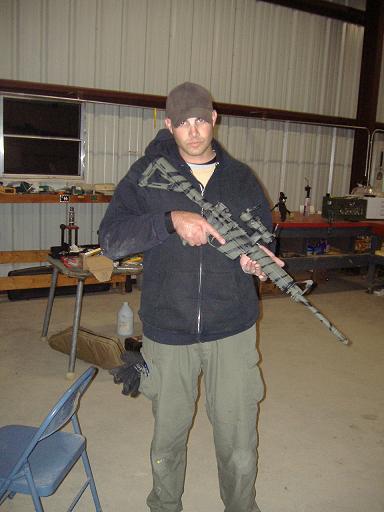
Now, this was all done
shooting 55 grain V-Max bullets with my Savage .22-250 which Rob
Bonacci, LRI's Armorer sorted out for me... The bloody gun could
extract a fired shell, but not eject it. He fixed that. Then gave it
a tiger stripe camo paint job. And he put a target crown on my carry
pistol. Rob is a fantastic gunsmith who really knows his craft. If
your gun has a problem, Rob will fix it.

The other students there
were solid good guys. Good shooters. Travis and Chris from Magpul
Dynamics, with their purpose built sniper rifles. Dimitri from LA.
Matt from Min. Matt was the most improved shooter, coming in with
his new hunting set up. A Weatherby Vanguard in .300 WSM topped with
a Nikon Monarch BDC rifle scope. He couldn't get that gun to group
at all at first... yet went away owning anything out to a 1000 yards
with authority. Dimitri, man... he shot group at 1000 yards that was
about 5 inches with a .308 using factory rolled ammunition...
Federal Gold Match. I about fell over when I saw that. The
instructors are good people... Shep, Marty, Jason, and Rob did a
great job and put on a course that I will never forget. Larry with
the cooking... Stan Wolfe... what can I say about Stan? The man is
an institution... he is developing a new mounting system for optics
on long range guns that allowed me to hit at 1100 yards easily
in high wind. He's Old School Marine, being a Veteran of the Korean
War. Stan has come out to each and every LRI course, and while not a
student of the course or an instructor per say, he had a lot of
wisdom he passed on to anyone who wanted to listen.

Then there is Ruben. An
insane Wire-Haired Griffon... which is a hairy sort of sporting
bird-dog. The floor was his territory, so don't leave anything on
it... or on your bunk in easy reach... or your sleeping bag with
arousing looking lumps. Because Ruben would either steal it or hump
it. Including old men such as Larry and Stan. Oh, this was funny.
Ruben was easily distracted
with a laser, I found. He would chase it with determination. The
trick is to get him chasing a laser, then lead it under or behind
the couch and turn it off to make it look like the dot was hiding.
Ruben would be occupied with this for a good long time. So if you
get Ruben interested in something that belongs to you... get him to
hunt that laser dot and he'll leave you alone.
I had a great time at LRI
and I was reluctant to leave this shooter's heaven... As the road
from LRI turned back from dirt to pavement, the music on the radio
changed to the news, and instantly I was back in the real world.
I look forward to going back
as soon as I can.
Gear Observations: Dimitri was
a genius when he busted out elbow and knee pads... and then a saint
when he let me use them to help my busted knee. I think brining knee
and elbow pads is a great idea... and I would recommend bringing
them. Since you spend a great deal of time in the prone, bring a pad
of some sort to lay on.
The Remington XCR Compact
Tactical performed very well... but it wasn't perfect. First thing I
had to get done was to build up a check rest. This allowed me to be
more consistent with my positioning. I had a hard time loading the 4th
round in the magazine. Sometimes it would load #4 with no problem,
other times, it would jam it up and you would have to dump all the
rounds. The good trigger got better as the class went on.
The PFI RR800-1 scope was
brilliant. I really like this scope, and I really like this
rifle/scope combination. The accuracy potential is impressive. The
yardage marks in the scope made hitting much easier. You still have
to find your range, calculate your wind... and your scope will tell
you where to hold for the shot. Because you zero this scope for 100
yards, and the one hundred yard line is so high, it is a little
different holding the gun on that mark... you naturally want to hold
for 400 yards, the center of the reticle. But don't do it... hold
where PFI suggests and you will be DNO... Dead Nuts On. That is, you
will be DNO if you bring ammunition that falls within PFI's
suggested performance range.
Unfortunately I brought the
wrong ammo for the task at hand. I brought with me Winchester
Super-X 150 grain cartridges. Here is what I learned. The rate of
twist is not good for 150 grainers and Winchester Super-X loads are
inconsistently loaded. This is a statement that I make in the same
tone as saying getting kicked in the balls hurt. It's not just
obvious, to you, but it's obvious to all those around you. The
ballistic coefficient of these soft points are horrible. They have
roughly the same drag as a Pontiac Aztec with the parking brake on.
They bleed energy to the point that after about 500 yards, the
bullets hardly any mark on the steel plates we were shooting at. You
will want to use heavier bullets, and you will want those loads to
be Match Grade... regardless of weapon or caliber. If you can't get
Match ammunition, get the next best thing.... and by that I mean not
ammunition from Remington or any Winchester White or Silver boxes.
Get Hornady. If not Hornady TAP, then Hornady Custom. If you can't
get Hornady, then Black Hills. If you can't get Black Hills, then
get Federal Premium or Federal Fusion. These rounds have higher BC's
than others, and more importantly are loaded more consistently.
Don't skimp on your ammo, get the best you can. Not just that, but
get a lot of it. I went through damn near 400 rounds. That's a lot.
If you reload, pay extra attention to your loading and craft each
cartridge with the utmost attention to detail, using the best
components... and make sure they work in your set up.
While, the ammunition that I
used was different from PFI's suggestion, The PFI scope worked quite
well. At 100 yards, I zeroed for the 100 yard mark. At 200 yards,
the scope was DNO. At 300 yards, this is where the ballistics
departed from PFI's ranges and to hit at 300 I held for 250 yards.
So I found my Dope for 300. I wrote that down in my data book.
Did I mention your data book? Bring a new one to this class... and
consider starting from scratch if you already have one you are
working on. Because the cats at LRI are going to give you more
information that you are going to want to track. Go to staples and
get a small spiral bound note pad, a good pen, and a mechanical
pencil for drawing range cards.
LRI showed us a few
interesting things. One being, scope failures. We had a number of
scopes shit the bed at the LRI course. We had a Burris crap out on
one individual. We had two Leupold Mk IV Tacticals go down. I had a
Leupold Vari-X III fail me... luckily it was zeroed when it stopped
adjusting so it's stuck... but where I needed it anyways. So I'll
deal with that later. Does this mean Burris and Leupold scopes wont
hold up? Not hardly. Anecdotal evidence is just observations
regarding one scope on one gun and you don't know what may have
happened to the scope before the failure. I have seen these scopes
on other guns go through hell and back. Eventually, every scope will
fail. That's just going to happen. It's only a matter of time. My
Vari-X III is an ancient early example of the breed. It's been fired
more than any scope should have to endure.. and it's still shooting.
Hell, I killed 4 prairie dogs with it on my lunch break after I
zeroed another gun. One thing that can lead to an early failure of a
scope, is improperly mounting. The rings and scope have to be
aligned perfectly or you get uneven pressure and stress through the
tube. There are lots of very subtle factors at play here... but they
amplify each other during recoil. Another thing that can lead to a
failure is environmental stresses. Are you leaving your scoped rifle
in your trunk during the heat of the day, then shooting the hell out
of it? Do you thing that scope will live a long life like that? We
can't control the process of manufacture or the quality control that
went in to your individual scope... but we can control how we treat
it. Your scoped rifle is a precision instrument... you have to treat
it as such.
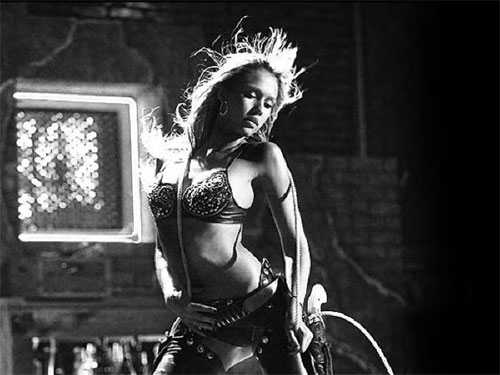


Copyright
G H Hill 1999-2012
|


